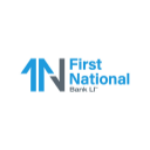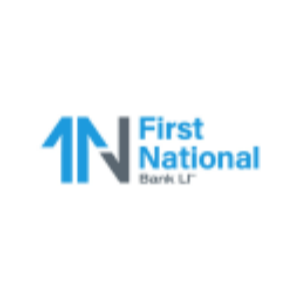Welcome to our dedicated page for First Long Is news (Ticker: FLIC), a resource for investors and traders seeking the latest updates and insights on First Long Is stock.
First Long Is Corp (FLIC) provides essential financial services through its community banking subsidiary, serving businesses and consumers across New York. This news hub offers investors and stakeholders direct access to official corporate communications and market-moving developments.
Track FLIC's financial trajectory through timely updates, strategic initiatives, and regulatory filings. Our curated collection includes earnings releases, leadership announcements, product launches, and operational milestones - all sourced from verified company disclosures.
Key updates cover loan portfolio performance, digital banking enhancements, and community development programs. Users will find detailed reports on interest margin trends, deposit growth metrics, and investment management service expansions that shape FLIC's market position.
Bookmark this page for unfiltered access to First Long Is Corp's financial narrative. Check regularly for updates on regulatory compliance achievements, branch network optimizations, and customer service innovations that define this established community banking institution.
The First of Long Island Corporation (Nasdaq: FLIC) reported strong first quarter results for 2022, with net income increasing to $12.1 million or $0.52 per share, up 7.2% year-over-year. Significant metrics include a 1.19% ROA and a 11.94% ROE, alongside a 2.90% net interest margin. Loan originations reached $261 million, contributing to an 8.1% rise in net interest income. The corporation repurchased 202,886 shares for $4.5 million. Despite a 1.4 million provision for credit losses, the overall financial outlook remains positive.
The First of Long Island Corporation (FLIC) has declared a cash dividend of $0.20 per share for the first quarter of 2022, marking a 5.3% increase from the $0.19 per share dividend issued last year. The payment will be made on March 24, 2022, to shareholders on record as of March 16, 2022. The corporation, parent to The First National Bank of Long Island, continues to focus on delivering exceptional service and a wide range of financial products to both business and consumer clients across Long Island and New York City.
The First of Long Island Corporation (Nasdaq: FLIC) announced a new stock repurchase program worth $30 million. This program allows the company to buy back shares through various means, including open market purchases and private transactions, but does not obligate the firm to repurchase any specific number of shares. The timing and volume of repurchases will depend on market conditions, liquidity, and available opportunities. This move aims to enhance shareholder value while maintaining flexibility in capital management.
The First of Long Island Corporation (Nasdaq: FLIC) reported a net income of $43.1 million and earnings per share (EPS) of $1.81 for 2021, up from $41.2 million and $1.72 in 2020. The net interest margin improved to 2.74%, aided by a 4.7% growth in net interest income. However, Q4 2021 saw a 14.4% decline in net income to $9.0 million. Noninterest expenses rose by 10.8%, driven by branch consolidations. The effective tax rate increased to 19.2%. The bank plans to enhance its digital presence and branch network in 2022.
The First of Long Island Corporation (Nasdaq: FLIC) has declared a fourth quarter cash dividend of $.20 per share, marking a 5.3% increase from last year's $.19. This dividend will be paid on January 14, 2022, to shareholders of record on January 5, 2022. The corporation, parent of The First National Bank of Long Island, focuses on providing banking services to small and middle market businesses and consumers across Long Island and New York City.
The First of Long Island Corporation (Nasdaq: FLIC) reported a 6.1% increase in third-quarter net income to $11.4 million and earnings per share (EPS) of $0.48. For the nine months ended September 30, net income rose 11.1% to $34.1 million with EPS at $1.43. The net interest margin improved to 2.71% in Q3 and 2.70% for the nine-month period. The bank also announced a 5.3% increase in cash dividends per share to $0.20. However, it anticipates continued downward pressure on net interest margins due to low market yields.
On September 24, 2021, The First of Long Island Corporation (Nasdaq: FLIC) declared a third quarter cash dividend of $0.20 per share, marking a 5.3% increase from last year's $0.19. This dividend will be payable on October 18, 2021, to shareholders recorded as of October 8, 2021. The First National Bank of Long Island, the corporation's sole subsidiary, operates 47 branches across Long Island and parts of New York City.
The First of Long Island Corporation (Nasdaq: FLIC) announced the closure and consolidation of eight branches effective November 30, 2021. This strategic move follows the 2020 closure of six branches and is aimed at optimizing the branch network while expanding into new markets. The Bank anticipates a pre-tax charge of up to $3.8 million for associated costs but expects to realize an annual pre-tax income benefit of $2.3 million by 2022, with a payback period of approximately 20 months.
The First of Long Island Corporation (Nasdaq: FLIC) reported strong financial performance for the second quarter and first half of 2021. Net income rose to $11.4 million ($0.48 per share) for Q2, up 5.8% year-over-year, and $22.7 million ($0.95 per share) for the first six months, marking a 13.8% increase. Key metrics include a net interest margin of 2.71%, a 7.6% rise in book value per share to $17.58, and an effective tax rate of 21.7%. Notably, the provision for credit losses saw a significant decline of $4.1 million, enhancing earnings stability amid economic recovery.
The First of Long Island Corporation (Nasdaq: FLIC) has declared a second quarter cash dividend of $0.19 per share, marking a 5.6% increase from $0.18 per share in the same quarter last year. This dividend will be paid on July 16, 2021 to shareholders of record as of July 8, 2021. The company's sole subsidiary, The First National Bank of Long Island, operates forty-seven branches across Long Island and parts of New York City.


